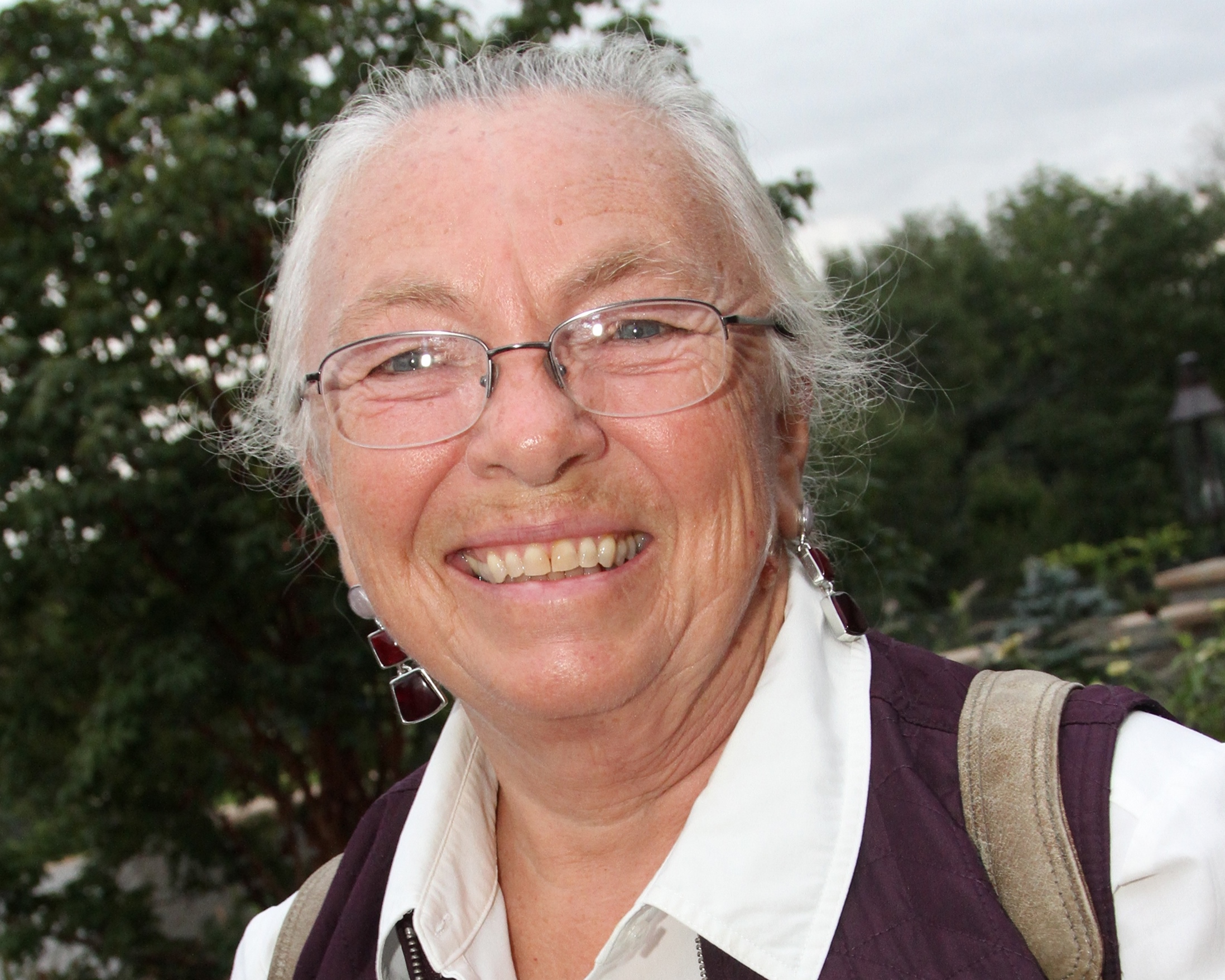2018 Life Logs, Day 283—Falmouth Trolley Tour
Date: Wednesday, October 10, 2018
Weather: Early Morning Fog, Turning Sunny; High 74, Low 66 degrees F
Location: At Home in The Cottage, East Falmouth, MA
A few days ago, a friend from the Newcomers group posted that she had an extra ticket for the last trolley tour of Falmouth for this season. This is sponsored by the Museums on the Green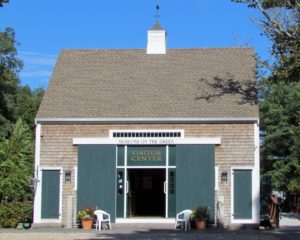 and is a two-hour driving tour highlighting all of Falmouth’s early history. I have lived here for seven years and have learned a lot about the town, but I jumped at the chance to learn more. It was a good decision because I really enjoyed the tour. I learned so many new things about this town and came home feeling very positive about this beautiful place where I live.
and is a two-hour driving tour highlighting all of Falmouth’s early history. I have lived here for seven years and have learned a lot about the town, but I jumped at the chance to learn more. It was a good decision because I really enjoyed the tour. I learned so many new things about this town and came home feeling very positive about this beautiful place where I live.
Our tour started at the Museums on the Green in downtown Falmouth. The Village Green is just that. A large green area that has been the town center since 1756.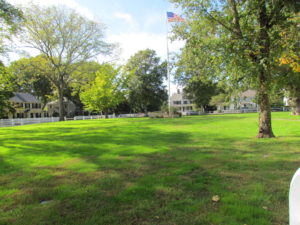 It is surrounded by homes dating back to that period and before. Next to the Museums on the Green is the Falmouth Congregational Church.
It is surrounded by homes dating back to that period and before. Next to the Museums on the Green is the Falmouth Congregational Church. I learned today that the first meeting house was built in 1700 or earlier near the Old Burying ground off Mill Road on the way to Woods Hole.
I learned today that the first meeting house was built in 1700 or earlier near the Old Burying ground off Mill Road on the way to Woods Hole. I never knew that cemetery existed, but today we were shown the gate and told that you can walk in to explore. From that first meeting house, a second was built in 1717 and was then moved and rebuilt by 1756 on the Village Green. The current building dates back to 1857. The frame of the building on the Village Green was moved across the street and renovated. In its steeple it has a bell made by Paul Revere. In 1858, Reverend William Bates was the minister and lived just down the street. Unfortunately, he died a year later just after his daughter, Katharine Lee Bates, was born. She went on to graduate from Wellesley College and become a professor there. One of her poems, America the Beautiful, was published in 1895 and Americans still sing that poem today. Across the Village Green an Episcopalian church was built in 1890.
I never knew that cemetery existed, but today we were shown the gate and told that you can walk in to explore. From that first meeting house, a second was built in 1717 and was then moved and rebuilt by 1756 on the Village Green. The current building dates back to 1857. The frame of the building on the Village Green was moved across the street and renovated. In its steeple it has a bell made by Paul Revere. In 1858, Reverend William Bates was the minister and lived just down the street. Unfortunately, he died a year later just after his daughter, Katharine Lee Bates, was born. She went on to graduate from Wellesley College and become a professor there. One of her poems, America the Beautiful, was published in 1895 and Americans still sing that poem today. Across the Village Green an Episcopalian church was built in 1890. It was funded by the wealthy Beebee family that moved to Falmouth from Boston. The two churches are very different in appearance. The Congregational Church is made of wood painted white. St. Barnabus is built of dark stone and looks like a small cathedral. But the stark contrast makes for a very interesting center for the town of Falmouth. As our tour continued, we drove by the homes of traders and whaling captains. Some of these homes have holes in them from cannon shots from the British ship, the HMS Nimrod, during the war of 1812. The Nimrod stood off Falmouth firing shots, but Falmouth fought back and no damage was done other than leaving behind canon shot. We drove on to Woods Hole, visited the Nobska Lighthouse, and drove through the Village of Woods Hole whose main street is lined with prestigious scientific research institutions: MBL or Marine Biological Laboratory dating back to 1888, WHOI or Woods Hole Oceanographic Institution dating back to 1930, NOAA and National Fisheries whose research began here in 1871. From Woods Hole we drove back to Falmouth and visited the Highfield Hall which was once the home of that very wealthy Beebee family that funded the building of St. Barnabus. While there, I walked down to the gardens and watched the Painted Lady butterflies. Beautiful.
It was funded by the wealthy Beebee family that moved to Falmouth from Boston. The two churches are very different in appearance. The Congregational Church is made of wood painted white. St. Barnabus is built of dark stone and looks like a small cathedral. But the stark contrast makes for a very interesting center for the town of Falmouth. As our tour continued, we drove by the homes of traders and whaling captains. Some of these homes have holes in them from cannon shots from the British ship, the HMS Nimrod, during the war of 1812. The Nimrod stood off Falmouth firing shots, but Falmouth fought back and no damage was done other than leaving behind canon shot. We drove on to Woods Hole, visited the Nobska Lighthouse, and drove through the Village of Woods Hole whose main street is lined with prestigious scientific research institutions: MBL or Marine Biological Laboratory dating back to 1888, WHOI or Woods Hole Oceanographic Institution dating back to 1930, NOAA and National Fisheries whose research began here in 1871. From Woods Hole we drove back to Falmouth and visited the Highfield Hall which was once the home of that very wealthy Beebee family that funded the building of St. Barnabus. While there, I walked down to the gardens and watched the Painted Lady butterflies. Beautiful.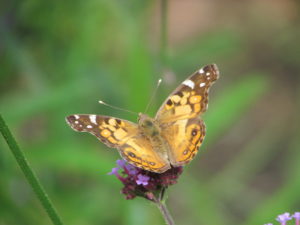 We ended our tour exploring parts of Falmouth Heights that I had never seen before despite the fact that I lived in that area for two years. I had no idea that there were homes there in the same gingerbread architectural design called Carpenter Gothic as those in Oak Bluffs on Martha’s Vineyard.
We ended our tour exploring parts of Falmouth Heights that I had never seen before despite the fact that I lived in that area for two years. I had no idea that there were homes there in the same gingerbread architectural design called Carpenter Gothic as those in Oak Bluffs on Martha’s Vineyard.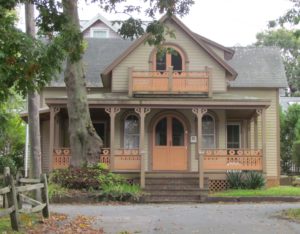 It was a wonderful tour and certainly peaked my interest in wanting to learn more about this town. After the tour, I had lunch downtown with two friends. We ate outside as the weather was so warm and sunny. As I started the drive home, the fog was beginning to roll in from the Vineyard Sound, but it was still bright and sunny in East Falmouth. I stopped by Menauhant Beach close to my house and saw the last beach rose
It was a wonderful tour and certainly peaked my interest in wanting to learn more about this town. After the tour, I had lunch downtown with two friends. We ate outside as the weather was so warm and sunny. As I started the drive home, the fog was beginning to roll in from the Vineyard Sound, but it was still bright and sunny in East Falmouth. I stopped by Menauhant Beach close to my house and saw the last beach rose and beach rose hip
and beach rose hip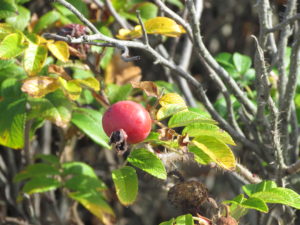 of summer and then drove by homes with what I call daisy bushes. They bloom in late summer and are at their peak at this time of year. Daisies are my favorite flower, so I love these bushes.
of summer and then drove by homes with what I call daisy bushes. They bloom in late summer and are at their peak at this time of year. Daisies are my favorite flower, so I love these bushes. It was a glorious day. I will end with the words of Katharine Lee Bates’ America the Beautiful.
It was a glorious day. I will end with the words of Katharine Lee Bates’ America the Beautiful.
O beautiful for spacious skies
For amber waves of grain
For purple mountains majesties
Above the fruited plain!
America! America!
God shed his grace on thee.
And crown thy good with brotherhood
From sea to shining sea!

